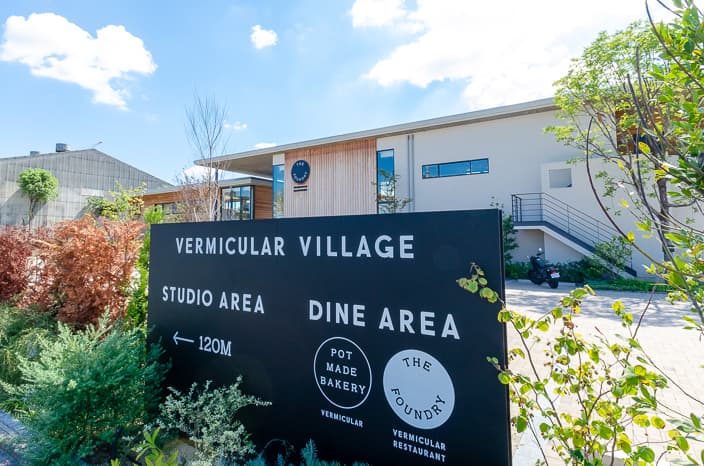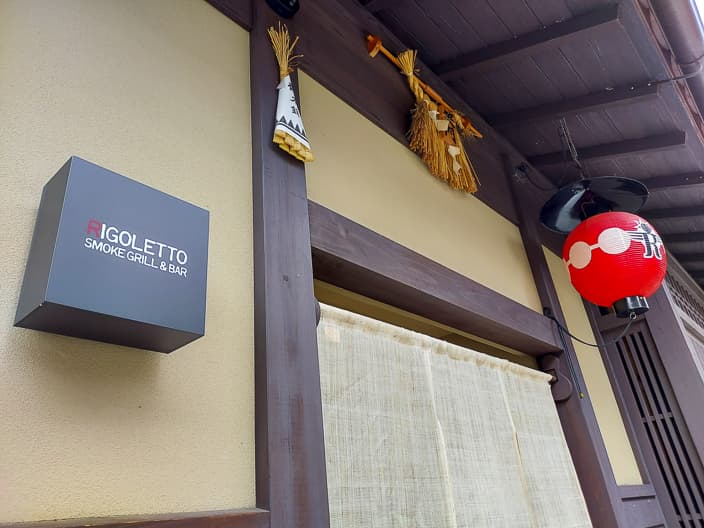“My History” serialized on the last page of the morning edition of the Nikkei newspaper is a resume-style autobiography in which celebrities in the political and business world and the culture and art world write half-life from birth to the present. It is a popular longevity column that began to be published in 1956 and has continued for about 66 years.
One person talks every day for a month, but last month (in April) was Mr. Kunio Noji, a former president and chairman of Komatsu, the world’s two largest construction machinery manufacturer, which celebrated its 101st anniversary, and is now a special adviser to the company.
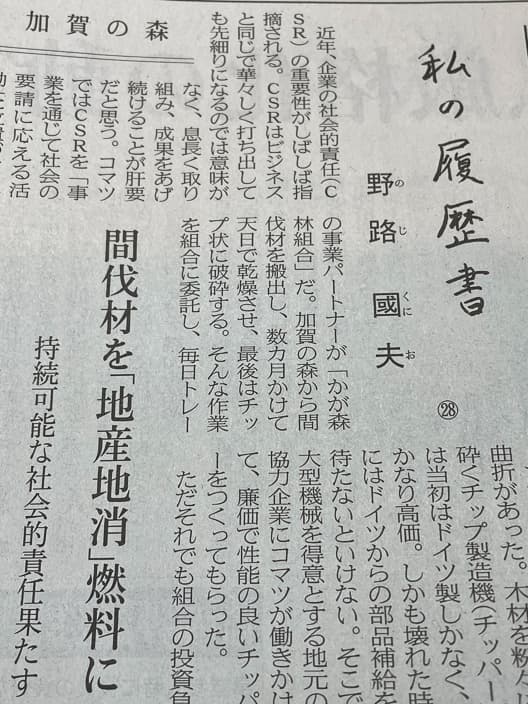
When he was the president of Komatsu, it was a time when unprecedented events such as the Lehman shock, the Great East Japan Earthquake, and the super-strong yen continued. The story of how to overcome the difficulties and grow Komatsu into a good company was an interesting series from the perspective of corporate crisis management. In the final episode of the series, a close-up shot of a golf lover alongside his wife was posted on the green of the golf course. Mr. Noji is the chairman of the “Tachikawa Kokusai Country Club” in Akiruno, Tokyo.
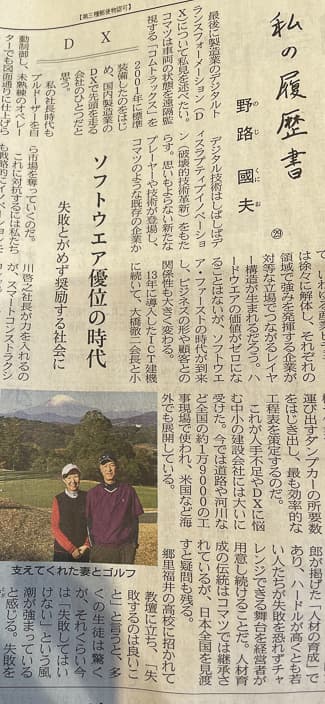
It was founded by many business people such as Yoshinari Kawai, a former chairman of Komatsu (Komatsu Ltd.), an agricultural and commercial bureaucrat, and a politician, in 1957, the year after the publication of “My History” began in the Nikkei newspaper. And it is a long-established course with a history of more than 60 years, which was opened in 1959. According to one theory, Komatsu’s experimental department, which Mr. Noji was assigned to when he was a newcomer, used the golf course construction site to investigate the performance of the bulldozer prototype.
Initially, the name of the founding body was “World Friends Association, Tachikawa International Country Club”, and the purpose of the activity was international goodwill mainly for young people and women. One of the activities was to provide Japanese cherry saplings and seeds to other countries, and in exchange for them, donate seedlings from each country and grow them in Japan. After that, the World Friendship Association was removed from the name of the organization, but the development of this area, which was a forest and agricultural land, will proceed. As a result, the addresses around the course are flowers, and the course name is also decorated with flowers.
In 1958, the “Flower Course” will be temporarily opened in 9 holes, and in 1959, it will be opened in 18 holes, 6,525 yards, and par 71. After that, in 1960, the “Okutama Course (The hinterland of the Tama River)” 18 holes, 6,805 yards, and par 73 opened, making it the only 36-hole large course in Tokyo.
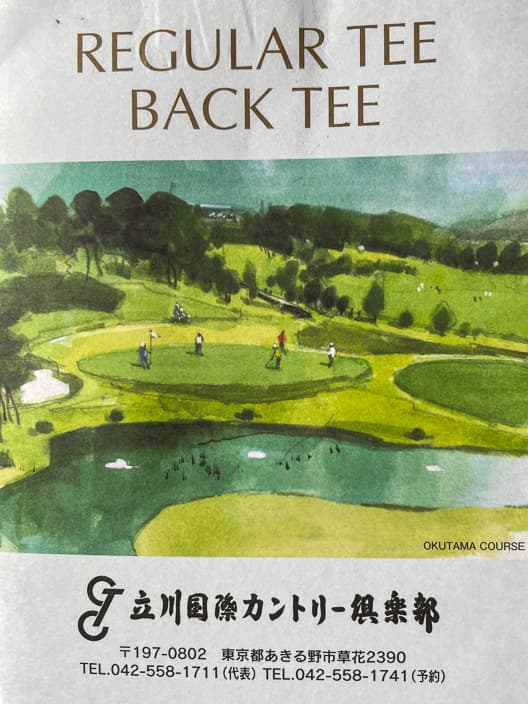
In the Heisei era (from 1989), the flower course was closed and 6 years were spent to ease the slope and extend the distance. After that, the rotation of the two courses was changed by constructing a new tunnel, and the layout was transformed into a modern layout. And in 2012, almost 50 years after the opening, a stylish new clubhouse and a 260-yard driving range with a roof where you can practice bunker and approach are completed.
The 36-hole course layout, which makes full use of the natural terrain of the hills, is unique. Although the “flower course” has become a little flat due to a major remodeling, there are downhills and uphill slopes, and in addition to hazard such as rivers and ponds, the fairways and greens have subtle undulations and are rich in variety.
On the other hand, the “Okutama Course” is more rugged than the “Flower Course” and is a highly difficult course that requires accurate shots. Especially in the final 18th hole, there is a big pond in front of the green, and the score cannot be read until the end, so it is challenging.
The layouts that take advantage of the natural terrain on both courses are unique and strategic, and you will never get tired of them, and the conditions of the fairways and bent greens are always in good condition. Since the fairway is not always wide, it is important to manage the course with accurate shots rather than swinging the driver to get a long distance.
Let’s take a look at the main holes of the flower course.
The 1st hole (337 yards, par 4) The start hole is a relatively short middle hole. Since the creek crosses around 200 yards, it is recommended to hit the tee shot with a short club and aim for the green with the second shot from the flat part of the fairway in front of the creek.
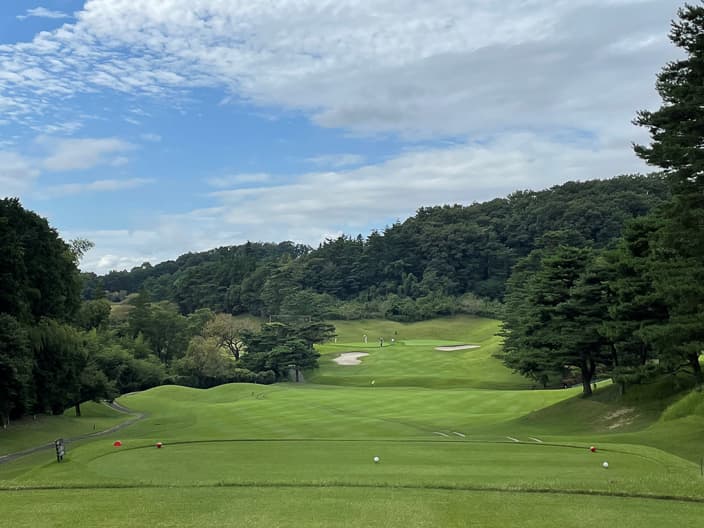
The 2nd hole (371 yards, par 4) is a middle hole that feels like a long distance because of the gentle uphill slope. The second shot requires a large club, but the course turns slightly to the right, the draw hitter needs to pay attention to the OB on the left side, so it is safe to aim for 3 on without overdoing it.
The 3rd hole (327 yards, par 4) is a short middle hole that curves to the left. If you make a shortcut, you will be caught in the cross bunker on the left, so the aim is to the right side where the fairway is wide.
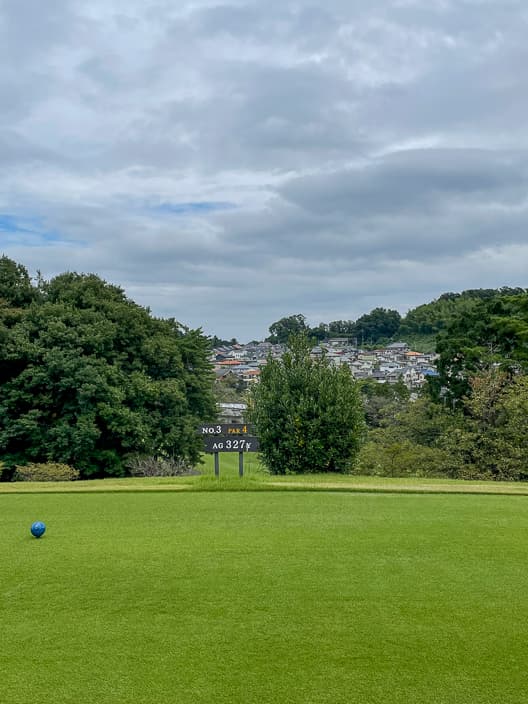
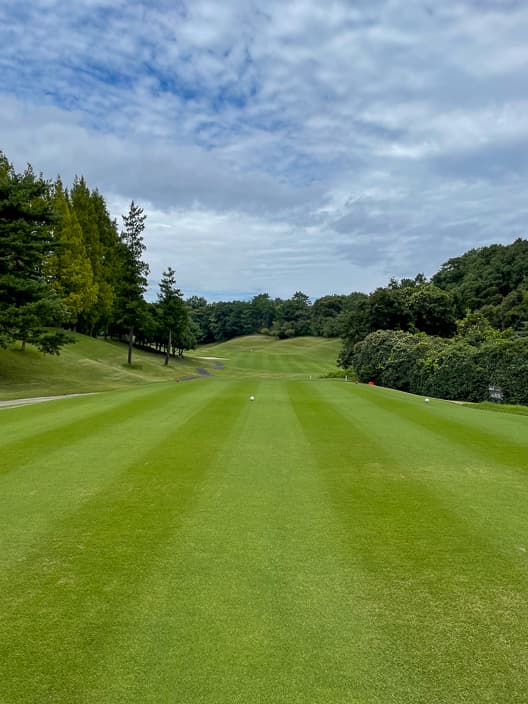
The 4th hole (161 yards, par 3) is a short hole with a large pond in front of the tee ground. There is a distance, so you should aim at the middle of the two greens without overdoing it with a large club.
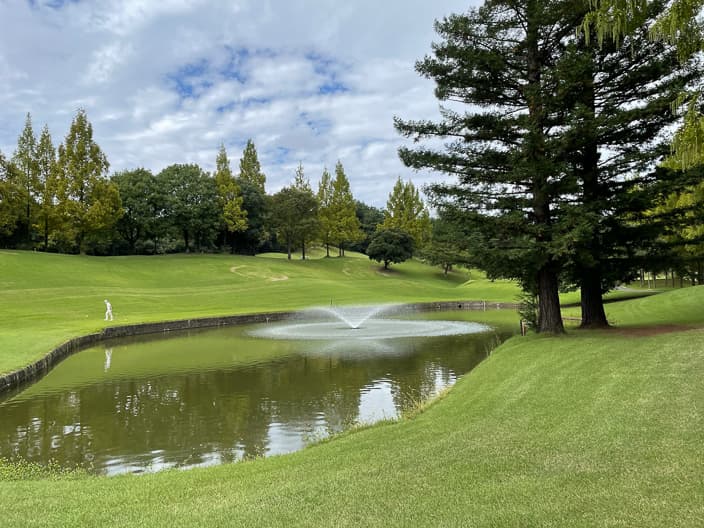
The 5th hole (472 yards, par 5) is a long hole with a relatively short distance, but it is not easy because it continues to climb to the green. As you get closer to the green, the fairway will be narrowed down, so the direction of the shot is important even after the second shot.
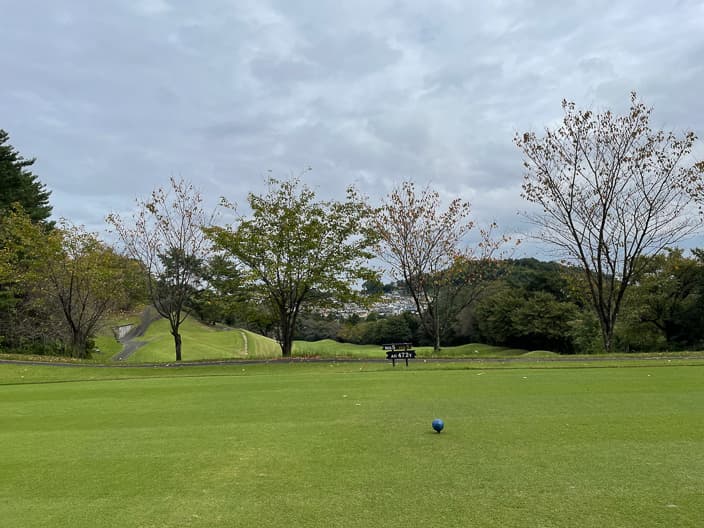
The 6th hole (359 yards, par 4) is a downhill slope like a ski slope from around 50 yards in front of the tee ground, and if the tee shot goes well on the slope, a 300 yard shot is not a dream. Even if you fly normally, it will roll over 200 yards, so it is important to hit the ball with an emphasis on direction without force.
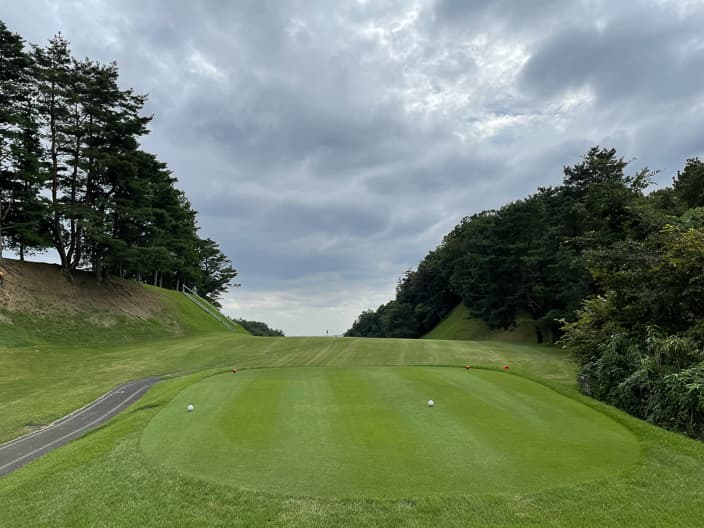
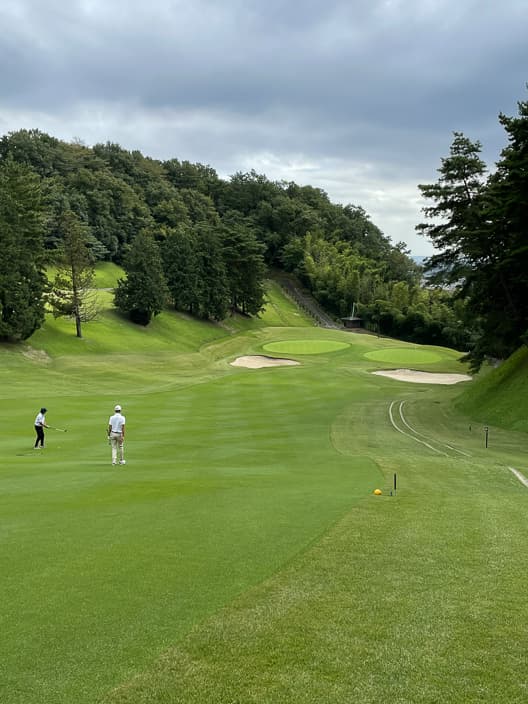
7th hole (362 yards, par 4) This time, it is a middle hole that goes up the road that came on the 6th hole. The left side is narrow and it is easy to go to the next hole, so the tee shot is aimed at the right side. Let’s have a large club with a steep uphill slope in front of the green.
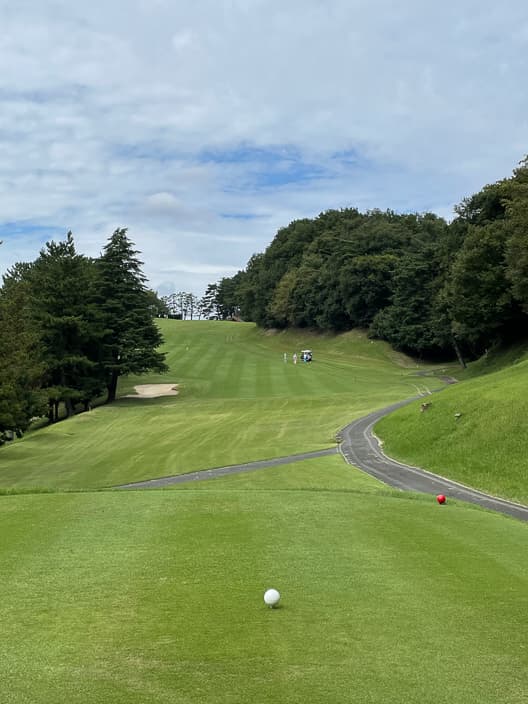
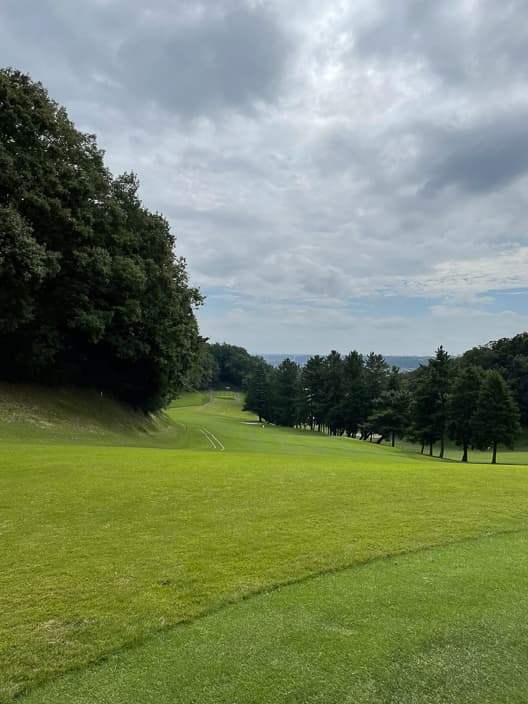
8th hole (148 yards, par 3) is a spacious short hole with no pond, making it easy to get a par, but since it is on a hill, you need to be careful about the effects of the wind.
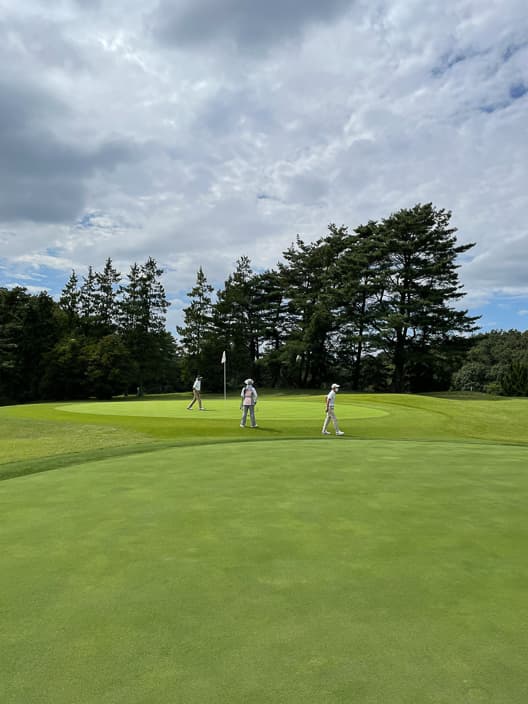
The 9th hole (509 yards, par 5) is a long hole with a continuous downhill slope, and if you hit the tee shot well, the ball will roll considerably and you will gain distance. The fairway turns sharply to the left just before the green, with pine trees and cross bunkers standing at the corners. It is difficult to hit a ball that crosses the top of a pine from a downhill lie, and you need to turn to the right to go safely.
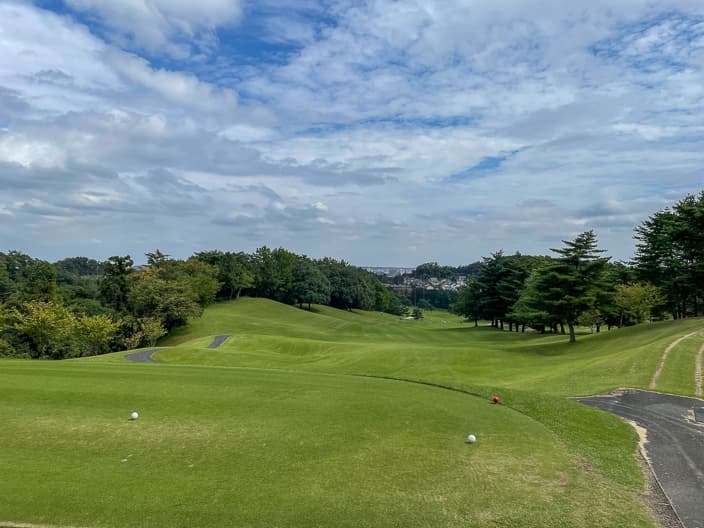
After finishing the half, we will have a meal in a beautiful restaurant that has been renovated. It’s nice to have a half-size menu for early lunch.
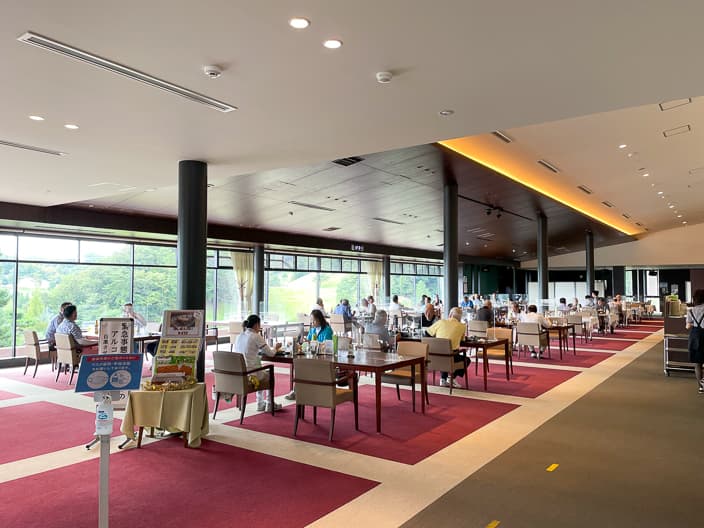
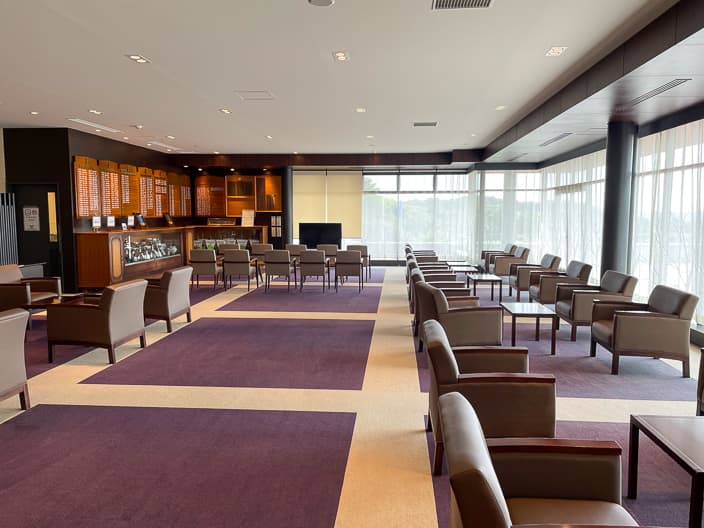
The 10th hole (474 yards, par 5) is a long hole with no distance, and the tee shot is downhill and can be hit toward a wide fairway. After the second shot, the climb will be gentle and you will not be able to see the pond in front of the green on your right. Focus on direction and carefully aim for the green from the left side.
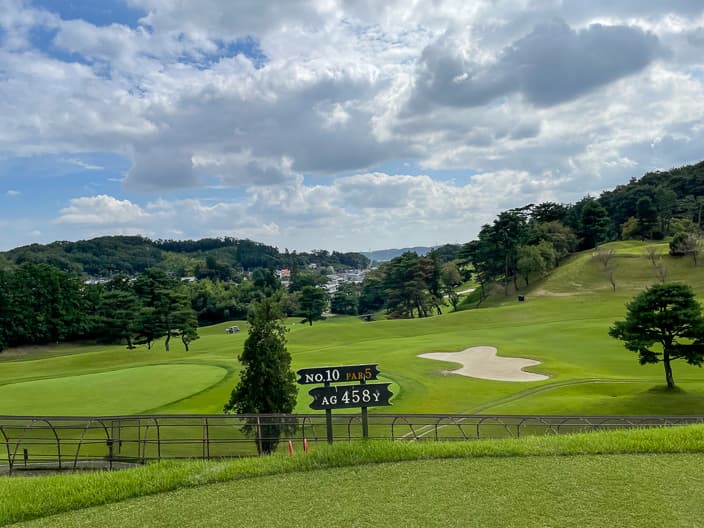
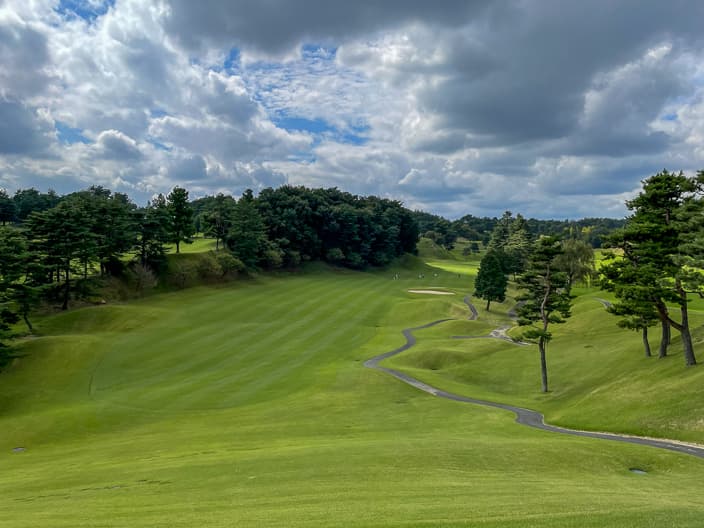
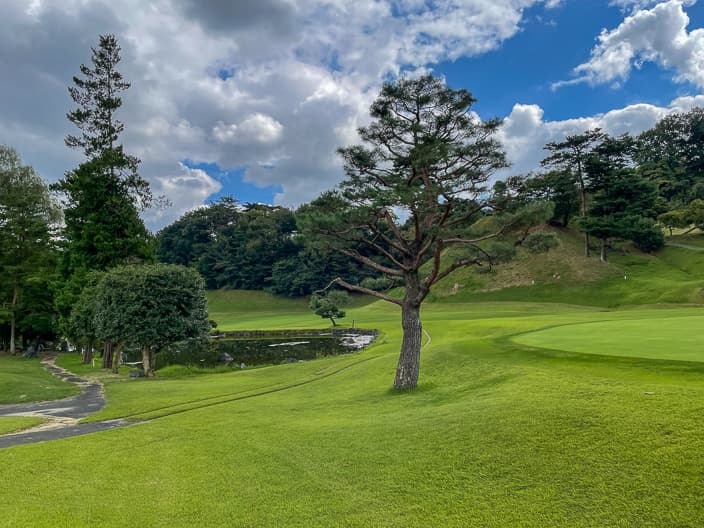
The 11th hole (145 yards, par 3) is a short hole with a relatively small pond in front of the tee ground. There is no distance, but if you are distracted by the pond, you should be careful because it is easy to drop it under the cliff on the right side.
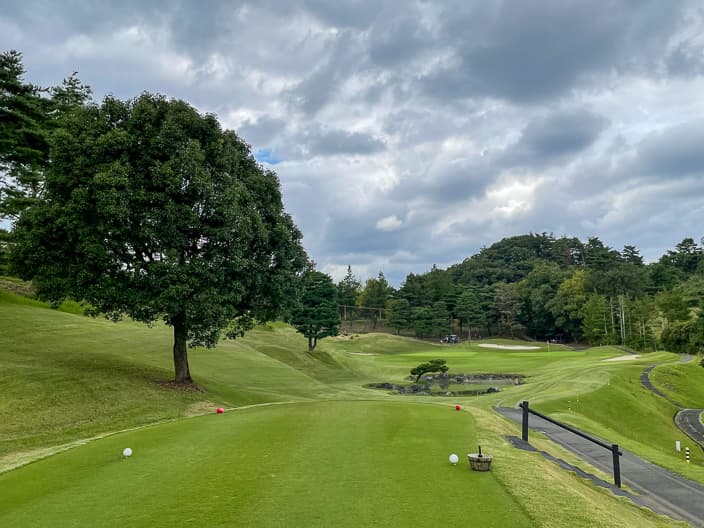
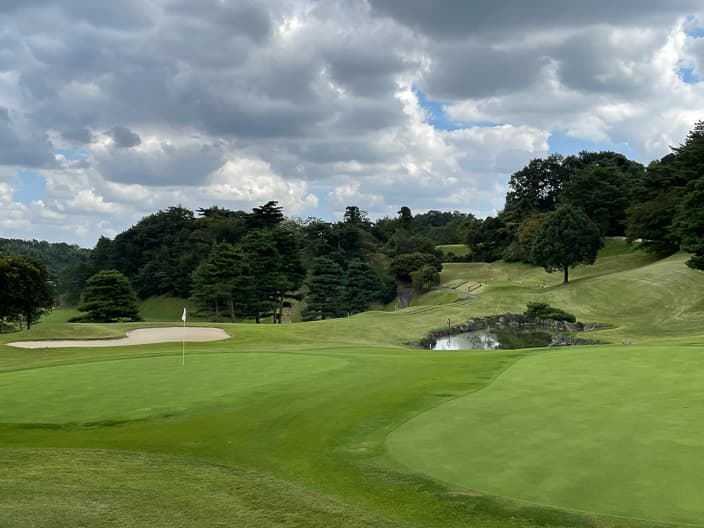
The 14th hole (388 yards, par 4) is a relatively long middle hole and the tee shot is downhill. To make it easier to hit the second shot, you want to aim at the right side of the cross bunker on the left. However, there is a large pond at the end of the cross bunker, and it is dangerous to go too far to the left. After the second shot, you will be climbing and the distance will remain, so aim for the green center with a large club.
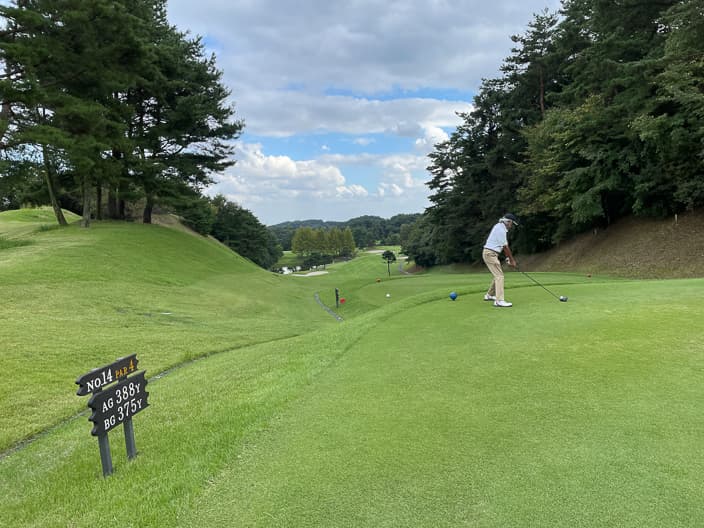
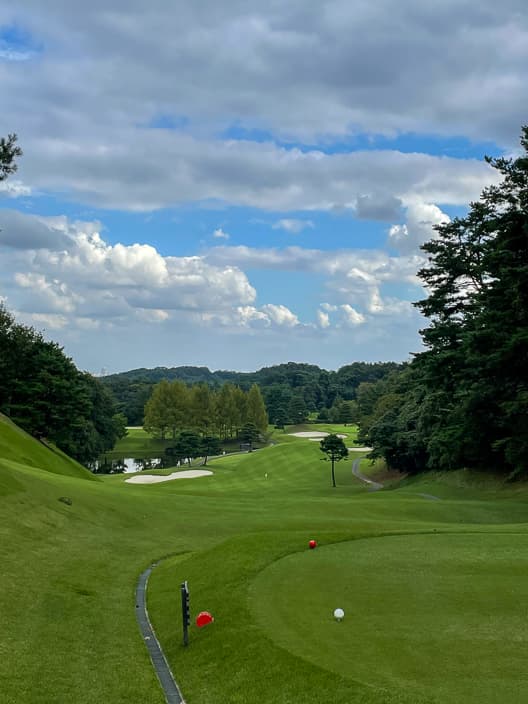
The 15th hole (174 yards, par 3) There is no pond, but it is a hole with a good distance and it is difficult to make one-on. It is also a good idea to aim for a two-on-one putt without overdoing it.
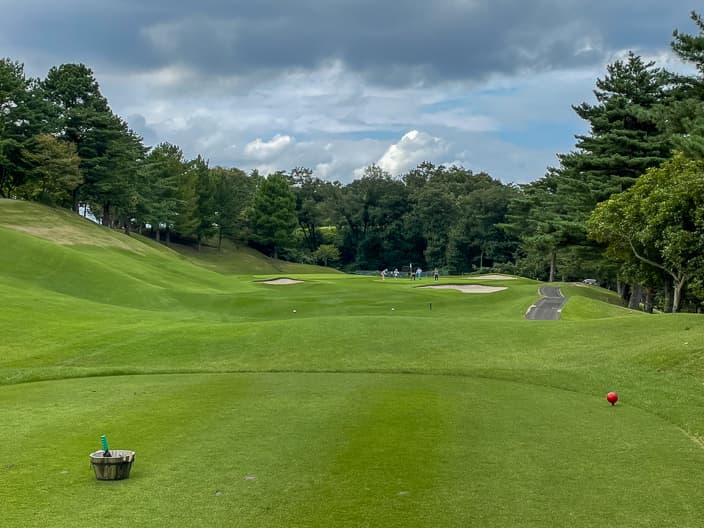
The 17th hole (304 yards, par 4) is a short downhill middle hole, and the tee shot can be penetrated by using a driver. If you aim for a shortcut, you will be caught by the large cross bunker on the left side, so be sure to place the tee shot in the large area on the right side. The green is on the left, which is almost a right angle, and you can aim at it with an approach shot from there, but since the green is horizontally long, you need to adjust the distance properly.
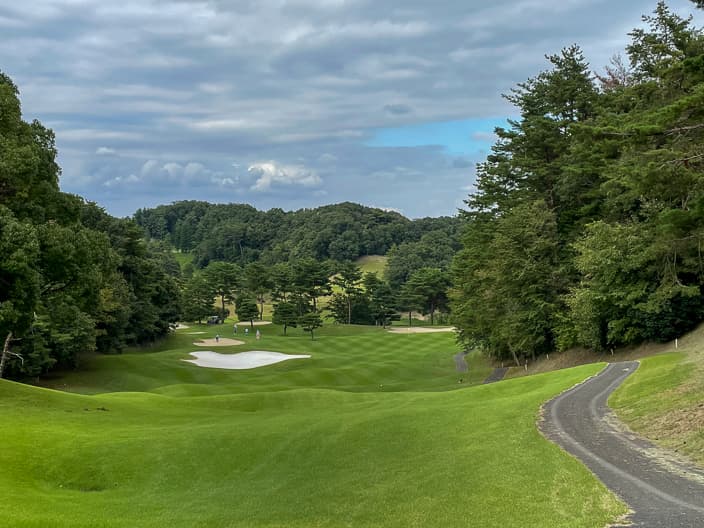
The 18th hole (487 yards, par 5) The final hole is a long downhill hole similar to the 9th hole, and the distance is relatively short, so you want to aim for a birdie. But a creek runs along the fairway on the left side, so it is safe to aim at the foot of the mountain on the left side for the tee shot. Since the green has a steep uphill slope, it is important to keep the fairway on the second shot, and place the ball where it is easy to hit an approach shot.
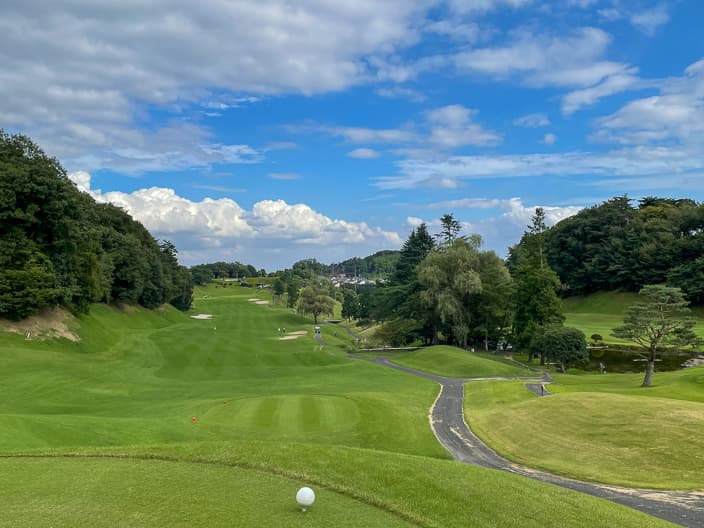
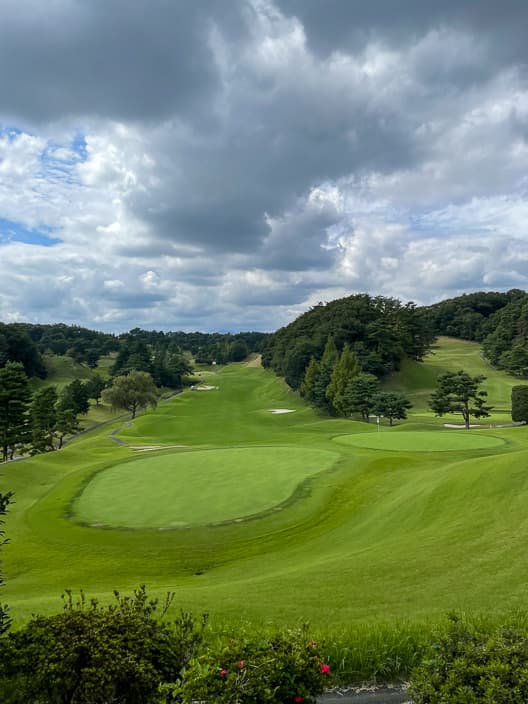
After playing surrounded by deep green forests famous for wild birds and many trees and flowers that color the four seasons such as cherry blossoms in spring and autumn leaves, you forget to play golf in the big city of Tokyo.
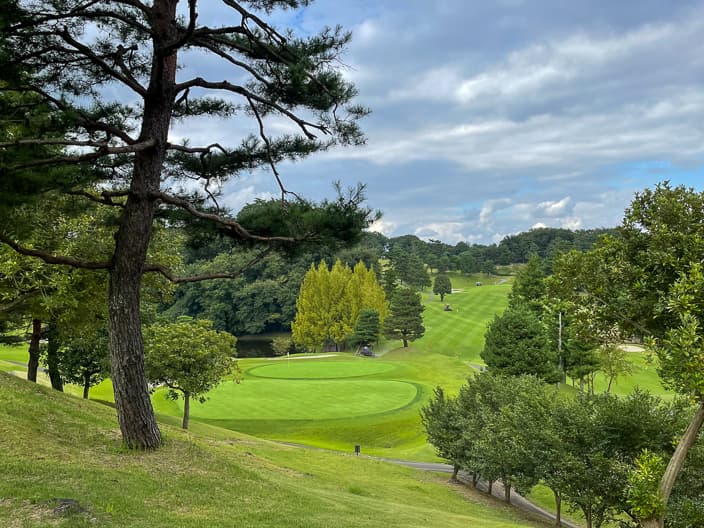
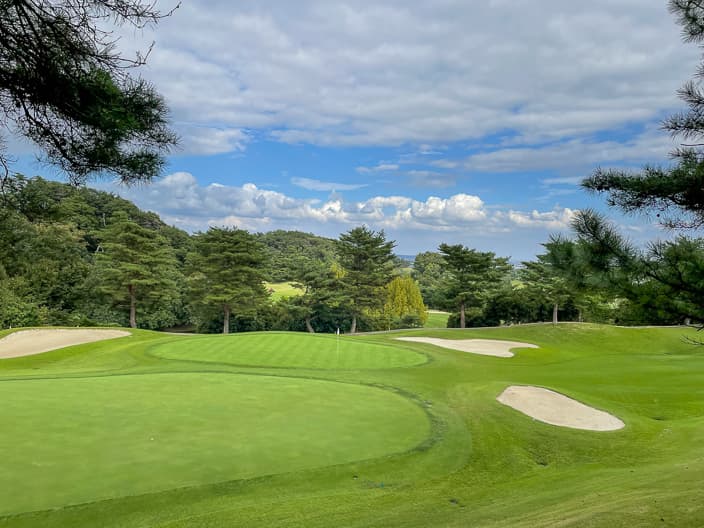
However, if you can return to the city center from the nearest Fussa station by train in about 45 minutes after playing, you can feel that you played on the course in Tokyo. Even if you return by car, it is about 20 minutes to the Hachioji IC on the Chuo Expressway, and about 10 minutes to the Hinode IC on the Ken-O Expressway.
Please enjoy golf on the big city of Tokyo, a big course full of nature.
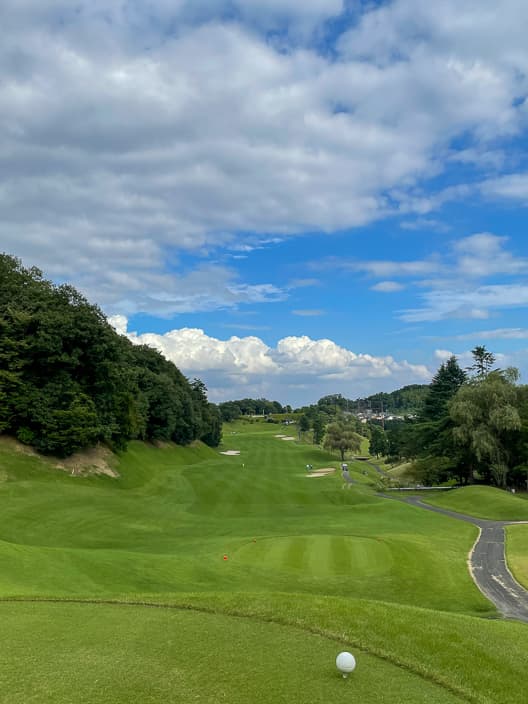
Tachikawa Kokusai Country Club
| Address | 2390 Kusabana, Akiruno city, TOKYO |
| TEL | 042-558-1711 |
| Website | https://www.tachikawakokusai.co.jp/ (Japanese Only) |


